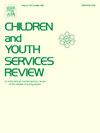Adolescents’ posttraumatic growth during the COVID-19 pandemic: The links between differentiation of self, parents’ posttraumatic growth, and adolescents’ gender
IF 2.4
2区 社会学
Q1 FAMILY STUDIES
引用次数: 0
Abstract
The COVID-19 outbreak produced a threatening and chaotic environment for adolescents, potentially affecting adolescent developmental tasks such as differentiation of self. Yet positive psychological changes such as posttraumatic growth (PTG) may also occur when adolescents struggle with such challenging circumstances. In this study, we focused on 134 parent–child pairs comprising Israeli adolescents (ages 11–17) and one of their parents (ages 30–59), two years after the initial COVID-19 outbreak. Participants were recruited using snowball and convenience sampling methods and completed online self-report questionnaires, which included background data, the post-traumatic growth inventory, and the differentiation of self inventory. We explored a moderated mediation model where parents’ PTG served as a mediator in the association between adolescents’ differentiation of self and adolescents’ PTG, with adolescents’ gender moderating this mediation. Results revealed a positive association between adolescents’ PTG and parents’ PTG, and negative associations between adolescents’ differentiation of self and adolescents’ PTG/parents’ PTG. Further, results confirmed the moderated mediation model for the association between parents’ and adolescents’ PTG, but not for the association between adolescents’ differentiation of self and adolescents’ PTG. Adolescents’ higher differentiation of self was associated with parents’ lower PTG, which in turn was associated with adolescents’ lower PTG, among male adolescents only. Overall, the study results shed light on the importance of tailoring crisis interventions to the family system as a whole, given that at traumatic times in particular the mutual effect of parent–child distress may foster a positive outcome such as PTG. In addition, clinicians might wish to consider how to utilize adolescents’ differentiation of self in family therapy, as it was found in this study to be a resource facilitating recovery after negative life events and may thus enhance well-being.
COVID-19 大流行期间青少年的创伤后成长:自我分化、父母的创伤后成长与青少年性别之间的联系
COVID-19 的爆发给青少年带来了一个充满威胁和混乱的环境,可能会影响青少年的发展任务,如自我分化。然而,当青少年在这种具有挑战性的环境中挣扎时,也可能出现积极的心理变化,如创伤后成长(PTG)。在这项研究中,我们重点关注了 134 对亲子关系,包括以色列青少年(11-17 岁)和他们的父母之一(30-59 岁),时间是 COVID-19 首次爆发两年之后。我们采用滚雪球和便利抽样方法招募参与者,并填写了在线自我报告问卷,其中包括背景数据、创伤后成长量表和自我分化量表。我们探索了一个调节中介模型,在该模型中,父母的创伤后成长量表是青少年自我分化与青少年创伤后成长量表之间关系的中介,而青少年的性别则对这一中介起调节作用。结果显示,青少年的 PTG 与父母的 PTG 之间存在正相关,而青少年的自我分化与青少年的 PTG/ 父母的 PTG 之间存在负相关。此外,研究结果证实了父母与青少年 PTG 之间的中介模型,但青少年的自我分化与青少年 PTG 之间的中介模型并不成立。仅在男性青少年中,青少年较高的自我分化与父母较低的PTG有关,而父母较低的PTG又与青少年较低的PTG有关。总之,研究结果阐明了针对整个家庭系统进行危机干预的重要性,因为在创伤时期,父母与子女之间的相互影响可能会产生积极的结果,如PTG。此外,临床医生不妨考虑如何在家庭治疗中利用青少年的自我分化,因为本研究发现,青少年的自我分化是一种资源,可促进青少年在经历负面生活事件后的恢复,从而提高他们的幸福感。
本文章由计算机程序翻译,如有差异,请以英文原文为准。
求助全文
约1分钟内获得全文
求助全文
来源期刊

Children and Youth Services Review
Multiple-
CiteScore
6.30
自引率
6.10%
发文量
303
期刊介绍:
Children and Youth Services Review is an interdisciplinary forum for critical scholarship regarding service programs for children and youth. The journal will publish full-length articles, current research and policy notes, and book reviews.
 求助内容:
求助内容: 应助结果提醒方式:
应助结果提醒方式:


